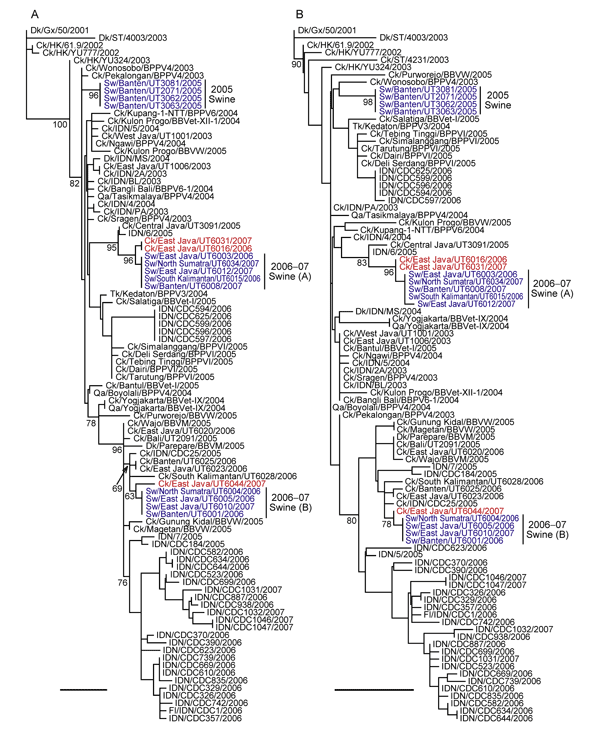Volume 16, Number 10—October 2010
Research
Influenza A (H5N1) Viruses from Pigs, Indonesia
Figure A2

Figure A2. Phylogenetic relationships of the polymerase acidic protein (PA) (A) and nucleocapsid protein (NP) (B) genes of influenza A (H5N1) viruses in Indonesia. All trees were generated by neighbor-joining in ClustalW (www.clustal.org). Numbers above or below branches indicate neighbor-joining bootstrap values. Analyses were based on nucleotides 1426–2172 (747 bp) and 46–913 (868 bp) of the PA and NP genes, respectively. Each tree was rooted to A/duck/Guangxi/50/2001. Colors indicate swine isolates (blue) and chicken isolates (red) most closely related to swine viruses. Scale bar indicates 0.01 nt substitutions per site. Ck, chicken; Dk, duck; Fl, feline; Gx, Guangxi; HK, Hong Kong; IDN, Indonesia; Qa, quail; ST, Shantou; Sw, swine.
Page created: September 07, 2011
Page updated: September 07, 2011
Page reviewed: September 07, 2011
The conclusions, findings, and opinions expressed by authors contributing to this journal do not necessarily reflect the official position of the U.S. Department of Health and Human Services, the Public Health Service, the Centers for Disease Control and Prevention, or the authors' affiliated institutions. Use of trade names is for identification only and does not imply endorsement by any of the groups named above.